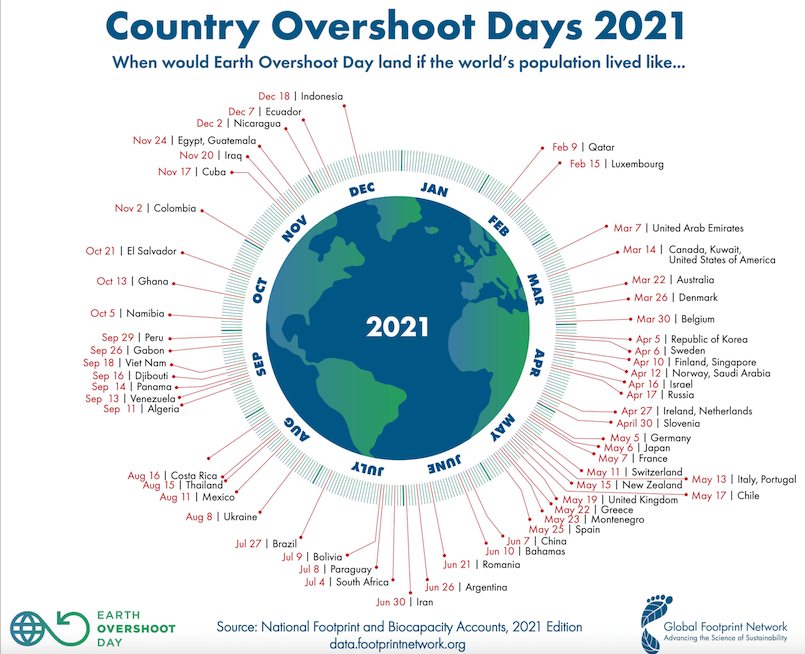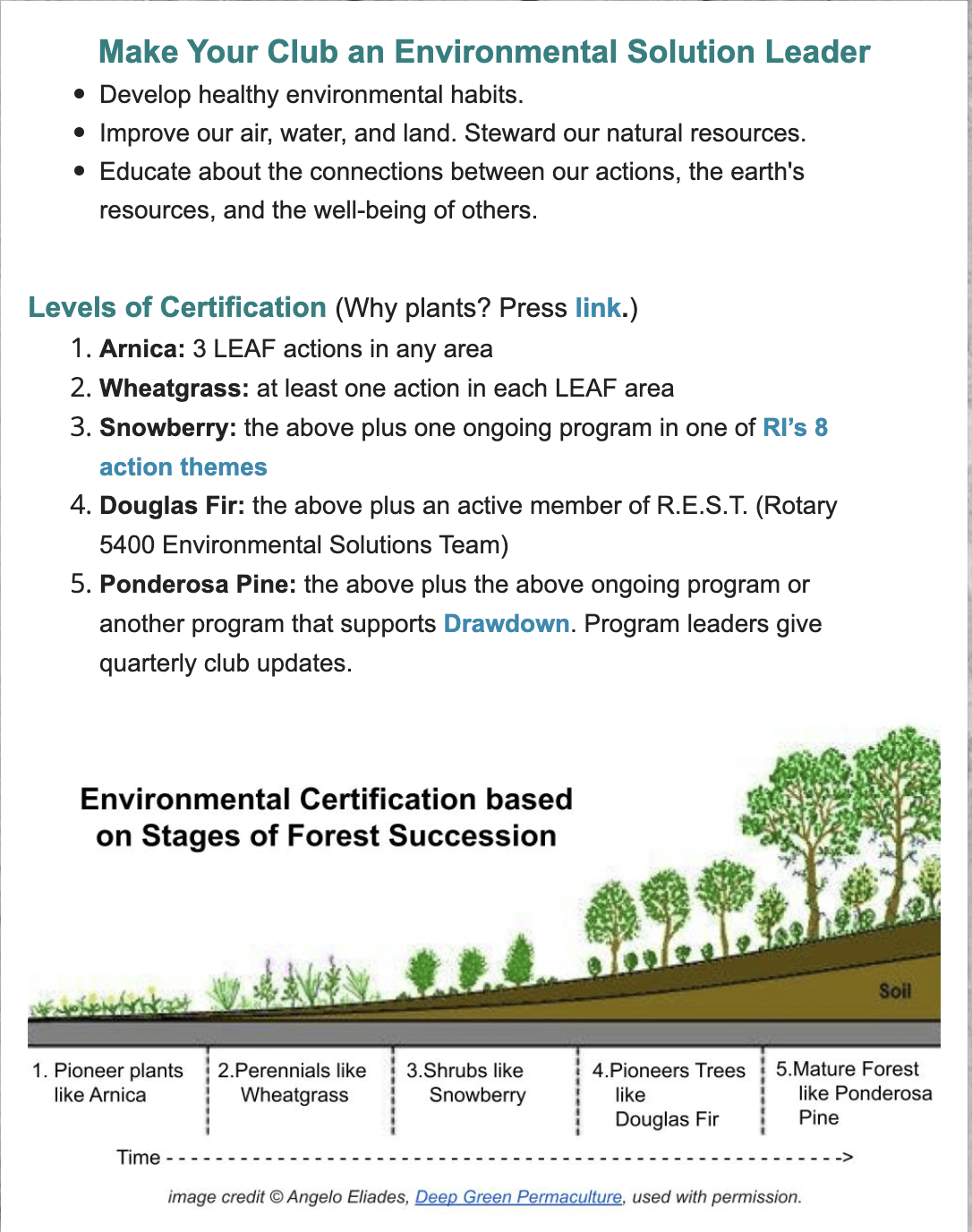Finding Common Ground

Finding Common Ground
Description
How do you get cattle ranchers and vegetarians to link arms to protect the planet? District 5400’s Earth Stewardship leaders have proved it’s not only feasible but delightful. They’ve created a toolkit for success based on goals and values that can unite Rotarians of any walk of life or political philosophy. In a district spanning Idaho in America’s Far West, they’ve created the Earth Stewardship Certification, offering clubs the fun of winning annual District-wide recognition for practical actions that advance Rotary’s worldwide goals – such as peace, health, and education – while healing the environment.
“It’s important to look at the language,” says project founder Laurie Zuckerman, Chair of D5400’s Environmental Stewardship Advisory Board. “The term ’climate change’ is politically controversial in my district. But the concept of ‘environmental stewardship’ brings us together.” Love and care for their land is deeply rooted in the Idaho ranchers whose livelihood depends on this rugged terrain.
As a third-generation Rotarian, a Catholic raised in a bi-partisan family, Laurie draws strength from all of her identities to foster teamwork. “In my faith tradition, God oversees all of this and judges how I served and promoted the well-being of this living earth,” she says. “As a result of Ian Riseley’s tree planting initiative,” she adds, “we Rotarians have all become more aware of our roles as stewards and that we must care for the air we share. The oxygen you breathe right now may have been produced by trees planted by Rotarians across the world. That oxygen enriches your blood, stimulates your thoughts, and fortifies the work of your body. What an intimate connection you and I have to each other. Rotary DOES connect the world.”
She is deeply committed to the non-partisan Citizens Climate Lobby and convinced by the science underlying the recommendations in Paul Hawkins’ Drawdown, a book “which uses language that is controversial in Idaho,” she says. But she points out that Drawdown recommendations include many things “our grandparents taught us and our doctors continue to remind us: eat your fruits and vegetables!” By inviting clubs to offer more plant-based menus, for example, “we’re able to mingle those traditional messages with the planet-saving strategies in Drawdown.”
The District’s friendly annual competition is designed to help Clubs begin to build environmental stewardship into their own Rotary identity by connecting it to other goals they share with Rotarians around the world. Long before the pandemic, District 5400 began using Zoom presentations, not only to reduce the carbon emissions caused by meetings, but also to connect Idaho clubs face-to face with Rotary’s worldwide work. Several clubs participated in a Zoom talk in February, 2020 by Past Rotary President Ian Risely on tree planting.
The neighboring Boise Centennial Club enjoyed a Zoom presentation from Guatemala by Laurie’s son, Curt Bowen, also a Rotarian, who leads a global-grant funded sustainable agriculture project to promote the use of new corn seeds with higher levels of iron, zinc, and protein. This will help prevent the chronic malnutrition that stunts the growth of nearly half of Guatemala’s children. The project reached over 10,000 families in just three years. It’s another powerful example of how environmental projects reinforce Rotary areas of focus, in this case maternal and child health.
The District’s annual Earth Stewardship Certification provides many benefits to Rotary Clubs: fun service projects, fellowship, good publicity, and credibility with young people. A great example is the Pocatello Club’s Deer Flat Restoration Project. Individuals representing 24 different Rotary Clubs (including Navi Mumain Garma Rotary in India), as well as other organizations and businesses across Idaho, teamed up to plant 2,000 seedlings. 30% of the volunteers were under age 21, and 30% were non-Rotarians.
The D 5400 Certification offers a menu of options under the acronym LEAF: Land and Water, Education, Air and Energy, and Food. Clubs can win recognition each year at three different levels, each named for indigenous Idaho plants. Sagebrush (Level One) is for clubs that complete one action. White Pine (Level Two) is for clubs that complete two, and Serviceberry (Level 3) is for clubs that complete three. Laurie describes the serviceberry as a “humble” plant and loves the fact that the word “service” is included in its name. “It’s no accident that the highest level is being humble and service-oriented,” she says.
The certification link offers several options under each LEAF category. Clubs can also get credit for a unique project of their own. Clubs winning the Serviceberry award receive a trading banner that shows they are an Environmental Stewardship club. It’s a great way to get other Rotary clubs intrigued about adding environmental stewardship to the ways they are People of Action.
“We want everyone to be successful. It’s about making people feel hopeful and invited,” says Laurie. “We want Clubs to do this year after year. This is shaping our identity, our sense of who we are.”
Listening to fellow Idahoans talk about the rewards of their environmental service projects shows viewers how protecting the planet can be fun instead of daunting. The Environmental Stewardship Advisory Team posted a winsome collection of interviews with Rotarians across the district on LEAF projects they are doing and what they are discovering – for example, about the humanitarian and economic benefits of composting and reducing food waste.
“As a Rotarian who is called to be earth steward, I’m even more aware that what I put into the air affects humans, animals, and plants across the globe,” Laurie Zuckerman explains. “I want them to breathe oxygen from what we’ve planted here in Idaho and the air we saved through our clean energy – hydro and wind power – not exhaust fumes from my car or airplane rides. I’m seeking ways to encourage global and national policies, initiatives and innovations that will improve the air for all of life– especially the poorest who Rotary serves.”
If your district would like to try this project, you can find valuable guidance in this 2020 D 5400 Earth Stewardship Advisory Board planning document. It includes an outline of the LEAF categories, a governance structure and budget request, and a short overview connecting this work to Rotary International policies over the past thirty years, including calls to action by RI Presidents Ian Risely, Barry Rassin, Mark Maloney, and Holger Knaack.
